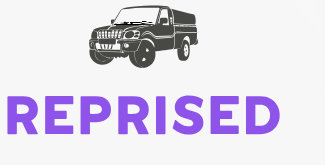Choosing the right primary school for your child is a crucial decision that can shape their educational experience and personal development. Public and private primary schools each offer unique benefits, but they also come with distinct differences. In this article, we’ll explore the key factors to consider when choosing between public and private primary schools to help you make an informed decision.

Understanding Public Primary Schools
Public schools are funded and operated by the government and are free for students to attend, though some minimal fees may apply for extracurricular activities or supplies.
Pros of Public Schools:
- Cost-free education: Public schools do not charge tuition, making them a more affordable option for most families.
- Diverse student body: Public schools often have a wide variety of students from different socioeconomic backgrounds, which can promote inclusivity and social development.
- Standardized curriculum: Public schools follow a curriculum set by the state or national education board, ensuring consistency in education.
Cons of Public Schools:
- Larger class sizes: Public schools may have larger class sizes, which can limit one-on-one attention for students.
- Limited resources: Public schools may face budget constraints, affecting the availability of extracurricular activities, advanced technology, or specialized programs.
- Varying quality: The quality of public schools can vary significantly depending on the school district and location.
Understanding Private Primary Schools
Private schools are independently operated and funded through tuition paid by families and other private sources. These schools often offer specialized curricula and a more tailored educational experience.
Pros of Private Schools:
- Smaller class sizes: Private schools typically offer smaller class sizes, allowing for more individualized attention from teachers.
- Specialized programs: Many private schools focus on specific educational philosophies (e.g., Montessori or Waldorf) or areas such as arts, STEM, or religious education.
- Enhanced resources: Private schools may have better funding for facilities, extracurricular activities, and special programs.
Cons of Private Schools:
- High tuition costs: Private education can be expensive, with tuition costs varying widely depending on the school.
- Limited diversity: Private schools may have less socioeconomic diversity due to the cost of attendance.
- Selective admissions: Some private schools have rigorous admissions processes, which may limit access for certain students.
Key Differences Between Public and Private Schools
| Public School | Private School |
|---|---|
| Funded by the government | Funded by tuition and private sources |
| Free or low-cost education | High tuition costs |
| Larger class sizes | Smaller class sizes |
| State-regulated curriculum | Flexible curriculum options |
| Open to all students | Selective admissions |
| Diverse student body | May have less socioeconomic diversity |
Factors to Consider When Choosing a School
When choosing between public and private primary schools, it’s important to consider your child’s unique needs and your family’s priorities. Here are key factors to help guide your decision:
1. Academic Quality
- Research the academic performance of schools in your area. Public schools follow a standardized curriculum, while private schools may offer specialized academic programs. Consider which approach aligns with your child’s learning style and interests.
2. Class Size and Individual Attention
- If your child thrives in a smaller class environment with more teacher interaction, a private school may be a better fit. Public schools often have larger class sizes, which may impact the level of individual attention.
3. Cost
- Public schools provide a cost-effective education, while private schools can require significant financial investment. Consider your budget and whether private school tuition is sustainable for your family.
4. Extracurricular Activities
- Both public and private schools offer extracurricular activities, but private schools may have more specialized or advanced programs due to better funding. If your child is passionate about sports, music, or arts, explore the extracurricular offerings at both types of schools.
5. Location and Convenience
- Public schools are typically zoned based on your residential address, making them more convenient for daily commuting. Private schools may require longer travel times, depending on their location.
6. School Culture and Philosophy
- Private schools may focus on specific religious or educational philosophies, which may align with your family’s values or approach to learning. Public schools tend to offer a more generalized curriculum and cultural environment.
7. Diversity and Inclusivity
- If diversity and inclusivity are important factors, research the student demographics of both public and private schools in your area. Public schools often have more varied student populations, while private schools may have a more homogenous demographic.
Visiting Schools: What to Look For
Before making a decision, it’s a good idea to visit the schools you’re considering. Take note of the following during your visit:
- Classroom environment: Are the classrooms well-organized and conducive to learning?
- Teacher-student interactions: Observe how teachers interact with students and whether they engage students effectively.
- Facilities: Evaluate the condition of school facilities, including classrooms, libraries, and playgrounds.
- Extracurricular opportunities: Ask about extracurricular programs and how they support student development.
Conclusion
Choosing between public and private primary schools requires careful consideration of factors like cost, class size, curriculum, and your child’s needs. Public schools offer accessible, diverse education at little or no cost, while private schools provide specialized programs and smaller class sizes at a higher price. Ultimately, the right choice depends on your child’s learning style, family values, and educational goals.

